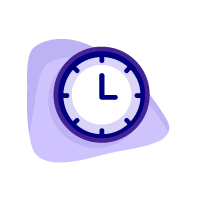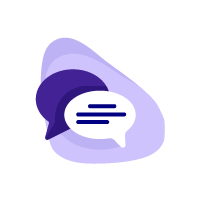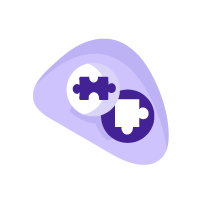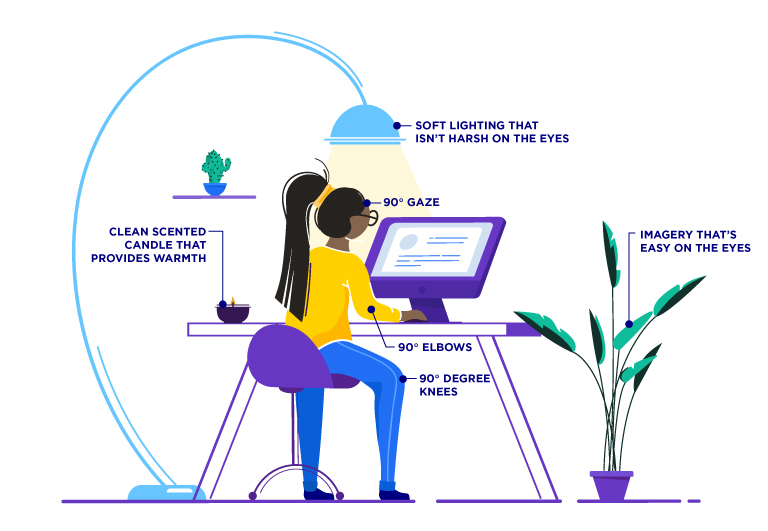Supporting Neurodiverse K-12 Students in Online Classrooms

Because schools are moving to online classrooms, both students and teachers are navigating major adjustments to routines, expectations and accessibility.
While using a computer may not be uncharted territory for K-12 students, occupational therapist Zoe Mailloux said using digital technology for educational purposes is a unique skill that students will need significant support with as they adjust to an isolated learning environment.
“If you were going to go learn a new sport or activity, how would you best learn that?” she said. “Would you learn it just only by watching someone else, or do you have to feel it in your body?
“For most of us, we have to be able to feel what we need within our own bodies,” she said.
For neurodivergent students in particular, this means creating a sensory-friendly environment at home, using universal design for assignments and classroom materials, and building a support system of peers, parents, educators and school staff.
What is Neurodiversity?
Neurodiversity is an approach to learning that recognizes neurological variations are a common aspect of the brain, and seeks to include and affirm the needs of people with variations rather than treating them as having conditions that need to be cured.
Neurodivergence includes autism spectrum disorder, ADHD, dyslexia, dyspraxia, dysphagia, Tourrette syndrome, obsessive compulsive disorder and other cognitive variations.
Sometimes these variations aren’t visible or noticeable to people who are considered neurotypical—people who don’t have diagnosed cognitive variations. The goals of the neurodiversity movement are to understand and respect people with neurodivergent traits, help them identify talents and strengths, and embrace the ways society and culture can modify structures to effectively include everyone.
Because many K-12 schools are beginning to use online classrooms, there’s more opportunity to identify and affirm the needs of all types of students, while leaving room for individual modifications that could benefit students’ learning experiences.
Literacy education professor Dr. Rachael Gabriel said that not every modification will be beneficial for every task, or for every student with a given disability or neurological variation.
“You can’t take a specific disability label and match it with a list of accommodations,” she said. “It needs to be up to the kid whether they feel like that is a useful accommodation for this task at this time.”
Strengths and Challenges of Neurodiversity in an Online Classroom
Gabriel and Mailloux identified several strengths and challenges of neurodivergent students who are familiar with using digital technology for entertainment, but new to virtual classrooms.
CHALLENGES
- Splitting attention between multiple tasks or expectations
- Building the stamina to pay attention for long periods of time
- Processing a large volume of information and responding quickly
- Processing a person’s body language or facial expressions
- Socializing with other students virtually while isolated at home
STRENGTHS
- Alternating between sources of information to complete an assignment
- Understanding patterns and detail-oriented information
- Previous exposure to using search engines to find information
- Proficiency in representing ideas visually and nonverbally
- Digital communication through social media and video games
Part of creating an accessible classroom is building an inclusive culture socially, which can be difficult without opportunities for students to spend time with each other. Educators and school staff can take steps to demonstrate and maintain inclusivity through social interaction that isn’t punished or seen as distracting:

Holding open office hours for the students before or after school

Utilizing chat rooms for students to communicate during class

Creating peer groups to work on homework and assignments
Gabriel said creating opportunities for socializing is important for kids who don’t automatically make friends in a virtual setting.
“If we just leave it to them to work with their friends, then kids that have really well-developed social skills for that environment are going to have a leg up,” she said. “So we need to give it some structure. Say, ‘Check in with your buddy at least twice,’ or ‘Your group should meet at least this many times for this project.’
Supporting Neurodivergent Students in Online Classroom
Accessibility guidelines that apply to brick-and-mortar classrooms can be used to address new and unique circumstances of online classrooms as well.
For instance, when learning at home, students are physically isolated from each other and resigned to the same environment throughout the day. There’s no physical movement from class to class, and the main subject of focus is on a small screen instead of a teacher moving throughout the room in front of a large whiteboard.
At home, students may experience distractions from poor lighting, background noises around the house, smells wafting in from a kitchen, and other people in the house.
Facing other students on the screen can be distracting or overwhelming for anyone who has difficulty processing facial expressions, and may feel lost without the close supervision of a teacher or classroom assistant.
Gabriel said accessibility is about making sure everyone can meaningfully understand and engage with course materials so they all have the same chances to participate in class.
How to Create an Accessible Online Classroom
Teachers have limited resources and time to redesign curricula for online learning, but there are many low-cost, long-term adjustments they can make to their personal materials.
- Use accessible fonts, colors, text hierarchy and contrast when designing homework, worksheets and class announcements.
- Become familiar with text-to-speech and speech-to-text programs that students might need to install on their devices.
- Create meaningful captions that describe both the audio and video components of a multimedia assignment.
- Find opportunities for students to communicate their thoughts in ways that don’t require language, like drawing, using icons or acting out scenarios.
- Record audio versions of printed instructions for each assignment that students can listen to repeatedly.
- Separate assignments into smaller segments or units so they are achievable and approachable for each student.
- Allow students to access materials repeatedly by making the instructions and references available after class or downloadable to a student’s device.
- Give students opportunities to interact with other students that aren’t reprimanded or seen as distracting.
Mailloux said that too often, efforts for universal design only include visual and auditory senses. She recommended taking it a step further by considering all of the senses that students might need help with.
“We have to think about the way we use our full brain and bodies to learn, and how to support all of those systems more effectively,” she said.
Smells, sounds, sights, feelings and taste are the common five senses that children are taught to understand, but Mailloux says that neurodivergent students may need help with two others: proprioception, which is a person’s sense of position in their body, and vestibular sense, which is a person’s sense of movement and gravity.
“We have to think about the way we use our full brain and bodies to learn, and how to support all of those systems more effectively.”
While educators can’t make changes to a student’s learning environment at home, Mailloux said it’s critical that students have a comfortable seat and desk height. “Their bodies will respond to discomfort and pain with distraction and disengagement,” she said.
She recommended that school staff and teachers reach out to families with suggestions on sensory-friendly environments for learning at home.
“If kids are uncomfortable, they’re going to get antsy really quickly,” Mailloux said.” She teaches kids and their parents a 90-90-90 rule, meaning each angle of the body should be at 90 degrees when seated.

While not every sensation may be perfectly accommodated in every home, Mailloux said that even addressing one sensory experience can go a long way with promoting attention, comfort and a positive learning experience.
Establishing Routines in an Online Classroom
Setting routines can be a helpful way to build structure, affirm small accomplishments and set expectations for individual students showing up to class each day.
“Students need to be able to marshal their attention and energy and put it in the right place,” Gabriel said. “We don’t want them to come all excited to learn, bright-eyed and bushy-tailed at 8 a.m., but really class starts at 8:15 and the first 10 minutes are for checking homework, and it’s kind of a bummer.”
Mailloux said the easiest way to set expectations is for teachers to be clear about the agenda ahead of class time.
“There’s going to be diversity in how much support is present at home, and the teacher may not know exactly who’s helping, so having routines can be a really big help,” Mailloux said.
She also recommended making space for physicality in every routine—stretch breaks, calisthenics, tactile demonstrations, or sharing a nearby object with the class—depending on the age group or developmental stage of the students.
“Not only does it get their brain and body in a better place to learn, but it also signals, ‘Okay, this is a physical switch from this topic to another,’” Mailloux said.
Daily Routine Checklists for K-12 Students
Every teacher’s ideal routine may be different, but Mailloux and Gabriel said there are general considerations to help establish routines with students.
- Make time for a wellness check at the beginning of class
- Answer questions about the previous night’s homework
- Go over the day’s agenda so students know what to expect
- Clarify when cameras and audio need to be on or off during class
- Explain when breakout discussions or chatting will be expected
- Identify when stretch breaks or playtimes will occur
- Have an emergency plan for internet and tech outages, storms, etc.
Using the considerations above, teachers or parents can download the PDFs below, and customize them by filling in the blanks.
Daily Morning Routine (PDF, 62KB)
Welcoming students to class and beginning the day with an open mind.
Daily Lunchtime Routine (PDF, 63KB)
Transitioning between activities and taking a break to eat.
Daily Afternoon Routine (PDF, 66KB)
Wrapping up the day’s lessons and answering questions about assignments.
Preparing for disruptions or technological mishaps.
These resources are for informational purposes only. Individuals should consult with a professional before using them.
School systems already have emergency plans for their campuses in the case of fire drills and natural disasters, but Gabriel said having plans for technology outages is a crucial addition.
“Every online class will have a connectivity issue at some point,” she said. “Teachers could say ‘If we can’t connect today, here’s what you should be doing in the background,’ or ‘If you’ve tried to log on four times and you can’t, you have a free day,’ or ‘Keep up with the textbook and we’ll pick up tomorrow.’”
Some schools may have district-wide policies for online classroom routines, while others may be created by school staff and educators. The important thing is, Gabriel said, that students know what is expected of them, and that they have the means to accomplish it.
Accessibility Support for Educators in Online Classrooms
The work of accommodation is often done by educators themselves, but an effective support system includes the school staff, administrators and counselors who can help with students’ wellness and accessibility needs.
Per policy of the American Library Association, special education teachers and librarians are trained and equipped to understand the needs of neurodivergent students, and can help with accessible technology and sensory friendly classrooms.
Mailloux also recommended that educators and parents get to know the occupational therapists available to students with special needs through their school district.
“All of our therapy is so physical, so hands on, so they have come up with a lot of creative ways of providing help and supports virtually during this pandemic,” Mailloux said.
Gabriel recommended building an informal network with educators at other schools.
“You might be the first person in your school to work with this student in this phase of their development,” she said. “A colleague in a different school or district might have had experiences that could be helpful in framing your understanding of what your students are going through.”
Educators can also rely on tech support personnel to help with digital accessibility. The virtual world may be new for most K-12 schools, but if they’ve purchased digital learning software from a company, a tech specialist or product demonstration can be a place to answer questions.
Additional Neurodiverse Classroom Resources for Educators
- Connections Academy: Tips and Tricks to Establishing Online Learning Routines
- Understood.org: For Educators | For learning and thinking differences
- Neuroclastic: Could Student-Focused Learning Help Neurodivergent Learners Get a Better Education?
- ACE-ED: Supporting Neurodivergent Students in an Online Environment
- Neurodiversity Hub: Resources for Students, Employers & More
